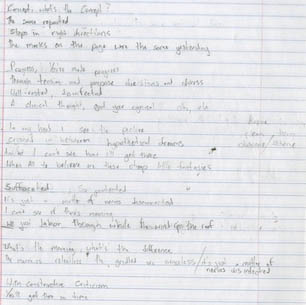Could temporary jets of seawater be used as functioning radio antennas? Apparently so: as PopSci reports, “communications are vital” for vessels at sea, but deck space for “all the large antennas necessary for long-range (and often encrypted) communications” can be hard to come by. “So U.S. Navy R&D lab SPAWAR Systems Center Pacific (SSC Pacific) engineered a clever scheme to turn the ocean’s most abundant resource into communications equipment, making antennas out of geysers of seawater.”
Using arcing vaultworks of oceanwater, like domesticated waves, to beam and receive encrypted telecommunications not only reduces the metal-load of ships—thus also reducing the radar profile of military vessels—it also offers a way to construct “a quick, temporary antenna that could just as easily be dismantled.”
What they [SPAWAR] came up with is little more than an electromagnetic ring and a water pump. The ring, called a current probe, creates a magnetic field through which the pump shoots a steam of seawater (the salt is a key ingredient, as the tech relies on the magnetic induction properties of sodium chloride). By controlling the height and width of the [stream], the operator can manipulate the frequency at which the antenna transmits and receives. An 80-foot-high stream can transmit and receive anywhere from 2 to 400 mHz, though much smaller streams can be used for varying other frequencies, ranging from HF through VHF to UHF.
Turning seawater into a temporary broadcast architecture is absolutely fascinating to me and has some extraordinary design implications for the future. Pirate radio stations made entirely from spiraling pinwheels of saltwater; cell-phone masts disguised as everyday displays spurting seasonally in public parks, from Moscow to Manhattan; TV towers replaced with Busby Berkeley-like aquatic extravaganzas, camouflaging the electromagnetic infrastructure of the city as a gigantic water garden.
 [Image: A mountainous display of women closely choreographed with water by Busby Berkeley, via Alexander Trevi’s Pruned].
[Image: A mountainous display of women closely choreographed with water by Busby Berkeley, via Alexander Trevi’s Pruned].
Given some salt, for instance, the Trevi Fountain could begin retransmitting mobile phone calls throughout the heat-rippling summer landscape of greater Rome. Ultra-refined specialty saltwaters offer dependable signal clarity in audio HD. La Machine de Marly becomes a buried industrial art project, beaming death metal salt hydrologies to garden visitors: a continuous fountain of thundering music on FM, headbanging to seawater hifi. Espionage conspiracies involving elaborate, deep-cover radio links hidden inside public fountains.
So how could this be further explored in the contexts of tidal river waters—Thames Radio!—rogue waves, and even tsunamis? The artistic, architectural, musical, and infrastructural misuse of this technology is something I very much look forward to hearing in the future.

 [Image: From “
[Image: From “ [Image: From “
[Image: From “
 [Images: From “
[Images: From “ [Image: From “
[Image: From “ [Image: The lyrics from “
[Image: The lyrics from “
 [Image: “The Dormant Workshop” by
[Image: “The Dormant Workshop” by  [Image: “Log Harvest 2041” by
[Image: “Log Harvest 2041” by  [Image: “Reforestation of the Thames Estuary” by
[Image: “Reforestation of the Thames Estuary” by  [Image: “Lecture Preparations” by
[Image: “Lecture Preparations” by  [Image: “Urban Nature” by
[Image: “Urban Nature” by  [Image: “Timber Craft Workshop” by
[Image: “Timber Craft Workshop” by  [Image: “Thames Revival” by
[Image: “Thames Revival” by